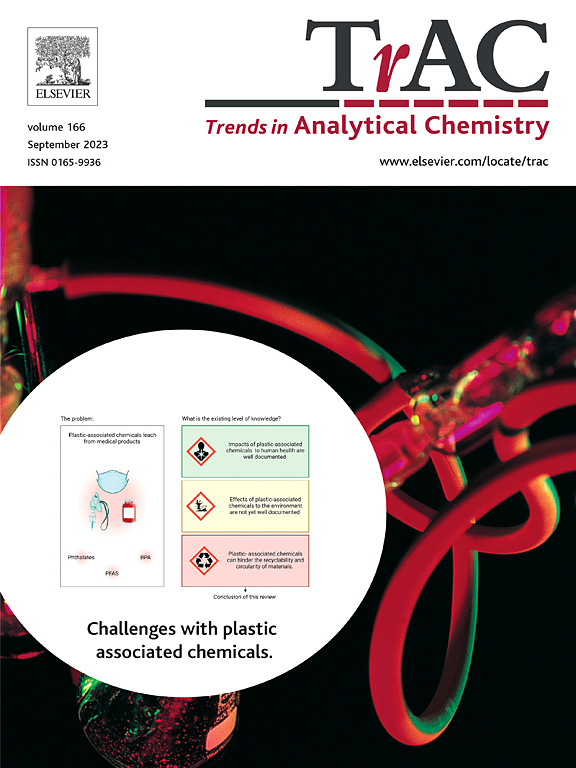Minimalist nanobody architecture: A double-edged sword for immunological analysis
IF 11.8
1区 化学
Q1 CHEMISTRY, ANALYTICAL
引用次数: 0
Abstract
A little over three decades developing, nanobodies (Nbs) are gaining increasing acceptance as analytical tools and promising therapeutic agents utilized within biological applications. They are well expressed in various microorganisms, easy to engineer, and highly robust to avoid storage deterioration and batch variance risks compared to that of conventional immunoglobulin G (IgG) antibodies, showing great promise as a new generation of commercial immunoreagents for analytical purpose. Nbs have remarkable characteristics that make them more favorable for use than conventional IgG antibodies or fragments thereof in certain areas of research. However, what is not widely appreciated is the two sides of their miniaturized structure when developing analytical methods. The progress made on advantages and limitations of miniaturized structure of Nb utilized in immunological analysis is reviewed in detail here. The goal is to offer the reader with (1) how Nb size enhances analytical performance; (2) in which scenarios limitations occur; and (3) how to mitigate these limitations. We focus in particular on the immobilization and bioconjugation chemistry to further amplify size contribution to analytical performance, as well as to compensate performance degradation results from miniaturized structure of Nbs.

极简纳米体结构:免疫分析的双刃剑
经过三十多年的发展,纳米体(Nbs)作为分析工具和有前途的治疗药物在生物应用中得到越来越多的认可。与传统的免疫球蛋白G (IgG)抗体相比,它们在各种微生物中表达良好,易于工程设计,并且具有高度鲁棒性,可以避免储存变质和批次差异风险,显示出作为新一代商业分析免疫试剂的巨大前景。Nbs具有显著的特性,使其在某些研究领域比传统的IgG抗体或其片段更有利于使用。然而,在发展分析方法时,没有被广泛认识到的是其微型化结构的两面性。本文综述了铌微型化结构在免疫学分析中的优势和局限性。目标是向读者提供(1)Nb尺寸如何增强分析性能;(二)发生情景限制的;(3)如何减轻这些限制。我们特别关注固定和生物偶联化学,以进一步扩大尺寸对分析性能的贡献,以及补偿Nbs结构小型化导致的性能下降。
本文章由计算机程序翻译,如有差异,请以英文原文为准。
求助全文
约1分钟内获得全文
求助全文
来源期刊

Trends in Analytical Chemistry
化学-分析化学
CiteScore
20.00
自引率
4.60%
发文量
257
审稿时长
3.4 months
期刊介绍:
TrAC publishes succinct and critical overviews of recent advancements in analytical chemistry, designed to assist analytical chemists and other users of analytical techniques. These reviews offer excellent, up-to-date, and timely coverage of various topics within analytical chemistry. Encompassing areas such as analytical instrumentation, biomedical analysis, biomolecular analysis, biosensors, chemical analysis, chemometrics, clinical chemistry, drug discovery, environmental analysis and monitoring, food analysis, forensic science, laboratory automation, materials science, metabolomics, pesticide-residue analysis, pharmaceutical analysis, proteomics, surface science, and water analysis and monitoring, these critical reviews provide comprehensive insights for practitioners in the field.
 求助内容:
求助内容: 应助结果提醒方式:
应助结果提醒方式:


